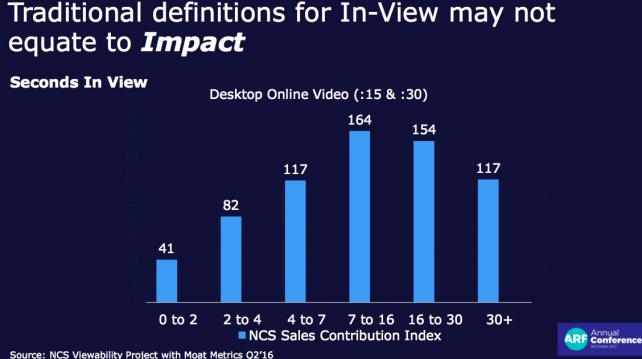Over the decades, auto dealer advertising on TV and radio has primarily been about getting attention and creating a sense of urgency--at any cost, including likeability. Many times, trying to achieve this goal results in yelling voices, blaring music, and sales messages that fly right over the viewer's heads. Why don't many of these ads connect with viewers?
One reason is viewability. For as much as you're excited about the last zany idea you did in your cable TV ad, most of the people watching it are cringing--or worse, laughing AT you. But there's an even more important reason these ads don't resonate with viewers.
Consider likeability. If a car dealer's TV commercials, radio commercials, and pre-roll videos have an off the charts cheese factor or if they are causing the viewer to pass out in boredom, then you're not only being ignored, you're not being liked. And who would do business with a company they don't like?
As you'll read in the Ad Age article below, it's a video's likeability factor that will cause a viewer to watch your commercial or pre-roll video longer. And longer view times mean more clicks and conversions.
How do you create commercials where people will like you? Be professional, be credible, be believable and trustworthy. It's easier said than done, especially when you also need to create attention and generate some urgency. That's where we can help you.
In the meantime, read this article and think about the importance of getting your viewers to view your commercials and videos for at least 15 seconds. And then think about whether or not your viewers like you in your current ads.

Viewability matters, but likeability matters even more in online video
By Jack Neff. Published on
Ad viewability matters when it comes to generating sales with online video, but not as much as whether the ad is likable. That's according to a study of Kellogg Co. brands by Nielsen Catalina Solutions to be presented Tuesday at the Advertising Research Foundation annual conference -- and it's news that may warm the hearts of creatives.
The study found that when online video ads reach the Media Rating Council standard (50% of pixels in view for at least two seconds) the resulting sales lift is much higher than when they don't. But longer view times up to 16 seconds had a much stronger correlation with sales. And ads deemed "likable" by panelists for copy testing firm Ace Metrixhad the strongest sales lift of all – a 172 index where 100 is the average for people exposed to ads in the study. Surprisingly, hitting the right target audience or the number of impressions mattered relatively little.
Likeable video means longer viewing
"There's a bit of a crisis of confidence in digital advertising right now," said NCS Chief Revenue Officer Andrew Feigenson. "I believe the way to get past that is through transparent metrics." And he said the study clearly suggests "a big difference between in view and not in view in terms of sales impact. But then we deconstructed that, and you see there's actually a value in views longer than two seconds."
Marketers are far from unified on the subject. Procter & Gamble Co. is pushing for digital marketers to validate viewership at the MRC level. Unilever has been insisting on videos playing at least half their length -- which for 30-second ads would be right in that 7-16 second sweet spot.
Digital measurement firm Moat and Yahoo's demand-side platform Brightroll, which served ads programmatically, also participated in the study involving undisclosed Kellogg brands. The study measured sales lift by matching people exposed to online video ads using Nielsen's online research panel with household sales results gleaned from Catalina's shopper loyalty card database. Sales for households where someone was exposed to the ads were compared to those where they weren't.
Video sweet spot
The wide-ranging study looked at 15 factors that could affect sales impact from online video ads, including frequency of impressions and whether the ads hit their intended targets. Those two factors – among the most important things programmatic ad buying manages–were among the weakest influences on sales.
The study supports the value of the MRC viewability standard – but with some important caveats. The biggest impact came between at 7-16 seconds, which had a sales-lift index of 164, well above the 82 index for ads that barely reached the MRC cutoff.
Yet even ads below the MRC standard for viewing time generated some sales lift, though less than a third of that for viewable impressions. Still, given that those impressions may be free for advertisers who only pay for viewable impressions, the study suggests they may be getting something for nothing.
The study also shows that the effect of hitting the MRC two-second standard isn't that different than just hitting Moat's standard for served impressions – ads that are audible and visible when fully loaded (AVOC) on a device. The sales-lift index for all MRC-viewable impressions was 154 vs. 135 for Moat's served impressions. Viewers who watched for two to four seconds -- just over the two-second minimum MRC threshold – had a sales-lift index at 82, well below that 135 level for Moat's AVOC impressions.
Maybe creative is the most important factor after all
The strong impact of likeability scores – which produced the biggest sales lift of all -- also raises the question of how important the media placement or the technology are vs. the quality of the creative and how well people simply like the ad. The strong correlation of both longer view times and likeability to sales, suggests people who liked the ads watched longer and bought more. That wasn't specifically tested in the study, however, Mr. Feigenson said.
More surprisingly, the sales lift for people who "watched" ads longer than 16 seconds actually was lower than when for those who watched shorter periods. Those paradoxical results suggest the longest view times may come in part from people who have looked away, put down their phones or otherwise aren't paying attention. Or else some stayed around long enough to see something they didn't like. But that wasn't part of the study either.
Read the original article here.


